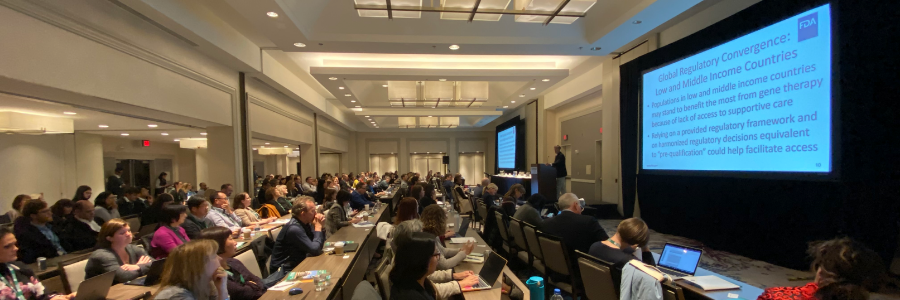Why I Attend the ASGCT Policy Summit
Emily Walsh Martin, PhD - August 09, 2021
This year's hybrid Policy Summit promises to deliver with key discussions around Medicaid coverage considerations, AAV insertion risk assessment, patient views on therapy opportunities and challenges, and more.

I got my start in gene and cell therapy eons ago: 2014. Immediately I recognized that, in spite of a decade in traditional drug development, I didn’t have a suitable understanding of the complexities of developing gene therapies.
Certainly, there were many technological considerations that were quite different. These included but were not limited to the distinct in vitro and in vivo paths to de-risk a product prior to initial first-in-human testing, and the limitations of those studies for predicting human efficacy and tolerability.
But more importantly, I found there were unique patient-facing considerations. For instance, while in time technology may change this, in those days there was no “off” switch for a gene therapy. So, for a small molecule or antibody therapy, patients could discontinue treatment. That’s really not the case for all of the current gene and gene-editing therapies in development. Moreover, while gene therapies have the benefit of a single administration, by the same token, the complexities of vector immunogenicity mean you currently only have one-shot on goal to achieve efficacy for a patient. So, if the dose isn’t correct or the durability isn’t favorable, you’ve possibly taken away that patient’s sole opportunity for a meaningful intervention (at least with that vector serotype). Whereas with small molecule or antibody drugs, you can always increase the dose (if tolerability permits) for a patient being underserved by the initial dose level.
Additionally, there is an entire world of consideration about payor reimbursement for the therapy. How does it work for a single dose therapy? Are insurance companies comfortable fronting all the reimbursement, do they care about durability of the therapy, etc.?
And frankly, these are only a handful of the considerations that program teams must consider as they map a path forward for a novel promising therapy. And if we are doing our jobs correctly, I would argue that we need to be thinking about all these topics prior to nominating a candidate therapy for development, far before IND-enabling studies, and likely a decade before we are at the finish line of getting these therapies to patients.
So where does one go to hear about the current thinking, insights and considerations for these topics and other key ethical and policy considerations around gene therapy?
That’s right – the ASGCT Policy Summit.
In my humble opinion, every gene therapy program leader, program manager, or functional lead team member regardless of discipline should attend. Every year I have attended, I’ve listened with rapt attention to topics I had never previously considered. And this year, promises to deliver yet again with key discussions around Medicaid coverage considerations, AAV insertion risk assessment, patient views on therapy opportunities and challenges, and more. I even plan to attend from my sabbatical on the high seas in Maine!
Dr. Walsh Martin is a principal at Tremont Therapeutics currently on sabbatical and a member of the ASGCT Communications Committee.
Related Articles